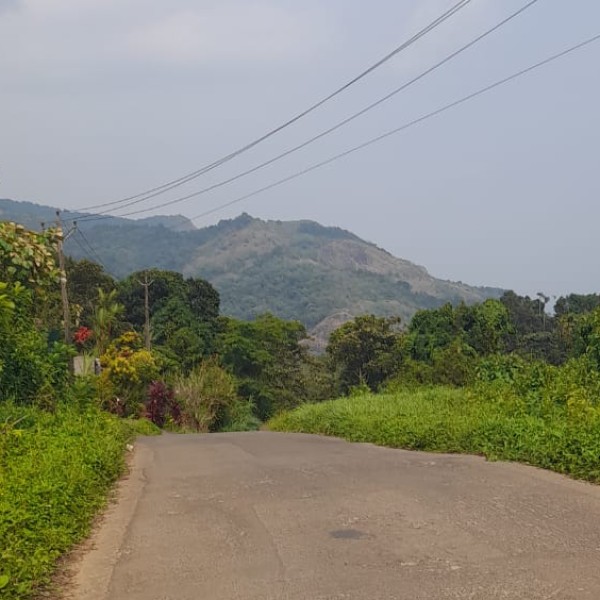Detailed factual overview:
LOCATION & GEOGRAPHY
- Location: Mawsynram is a village in the East Khasi Hills district of Meghalaya, India.
- Coordinates: Approximately 25.30° N latitude, 91.58° E longitude.
- Elevation: Around 1,400 meters (4,600 feet) above sea level.
- Geographic Setting:
- Perched on the Shillong Plateau.
- Overlooks the plains of Bangladesh, which contributes to its unique weather pattern.
- Located about 65 km southwest of Shillong, the state capital.
RAINFALL & CLIMATE
- World Record Holder: Mawsynram is officially one of the wettest places on Earth.
- Average Annual Rainfall: Approximately 11,872 mm (467.4 inches).
- Rainiest Months: June to September (during the southwest monsoon).
- Climate Type: Subtropical highland climate (Cwb – Köppen classification).
- Temperature:
- Summer: 16°C to 22°C.
- Winter: 4°C to 15°C.
- Weather Characteristics:
- Frequent rainfall, dense fog, and high humidity.
- Rain often falls as drizzle or heavy downpours, accompanied by thunderstorms.
Why so much rain?
- Mawsynram's heavy rainfall is caused by the Bay of Bengal monsoon winds.
- These moist winds are trapped by the Khasi Hills and forced to rise, causing intense orographic rainfall.
PEOPLE & CULTURE
- Population: Small, with a few hundred families.
- Ethnic Group: Predominantly inhabited by the Khasi tribe.
- Language:
- Khasi is widely spoken.
- English is used in education and administration.
- Religion: Mostly Christian (mainly Presbyterian), with traditional Khasi animist beliefs still observed by some.
- Culture:
- Follows the matrilineal system (property and lineage pass through the mother).
- Known for oral folklore, traditional dances, and Khasi music.
TOURISM & ATTRACTIONS
Despite its remote location, Mawsynram attracts tourists seeking unique climate experiences and natural beauty.
Popular Attractions:
- Mawjymbuin Cave:
- A natural limestone cave.
- Famous for a stalagmite shaped like a Shiva Linga, attracting Hindu pilgrims.
- Mawsynram Village Viewpoints:
- Offer panoramic views of the Bangladesh plains, dramatic landscapes, and rainclouds.
- Green Valleys & Waterfalls:
- Lush surroundings with seasonal streams and waterfalls, especially vibrant during monsoon.
- Symper Rock:
- A massive flat-topped rock formation offering panoramic views and trekking opportunities.
- Sacred Groves & Forest Trails:
- Some areas are considered sacred and are protected by traditional Khasi beliefs.
EDUCATION & LIFESTYLE
- Mawsynram has primary and secondary schools, often run by local churches.
- Higher education is generally pursued in Shillong.
- Houses are built with thick tin roofs and heavy insulation to withstand the continuous rains.
- Traditional Khasi houses made of wood and bamboo are also common.
ENVIRONMENT & ECOLOGY
- Flora: Extremely rich in mosses, ferns, orchids, and subtropical forest vegetation.
- Fauna: Home to birds, butterflies, and smaller mammals adapted to wet climates.
- Soil: Due to high rainfall, soil erosion is a serious concern.
- Water Management: Ironically, despite high rainfall, water scarcity can occur in dry months due to poor storage and rapid runoff.
TRANSPORT & CONNECTIVITY
- By Road: Accessible via State Highway from Shillong (approx. 2.5–3-hour drive).
- Buses, shared taxis, and private vehicles connect Mawsynram with Shillong.
- Nearest Airport:
- Shillong Airport (Umroi) – approx. 90 km away.
- Guwahati Airport (Assam) – approx. 170 km away for major air travel.
- No rail access – nearest railhead is Guwahati Railway Station.
LOCAL ECONOMY
- Occupations: Farming, livestock rearing, and handicrafts.
- Agriculture: Cultivation of rice, maize, potatoes, and local vegetables.
- Handicrafts: Bamboo and cane products, wood carvings, and traditional Khasi tools.
- Tourism is emerging as a seasonal economic activity.
INTERESTING FACTS
- Guinness Recognition: Mawsynram is recognized by various global institutions as one of the rainiest inhabited places on Earth, rivaling Cherrapunjee (Sohra).
- Locals often use grass and rubber sheets to soundproof roofs from the deafening rain.
- Mawsynram and Cherrapunjee are often compared, but Mawsynram generally receives slightly more rain annually.
